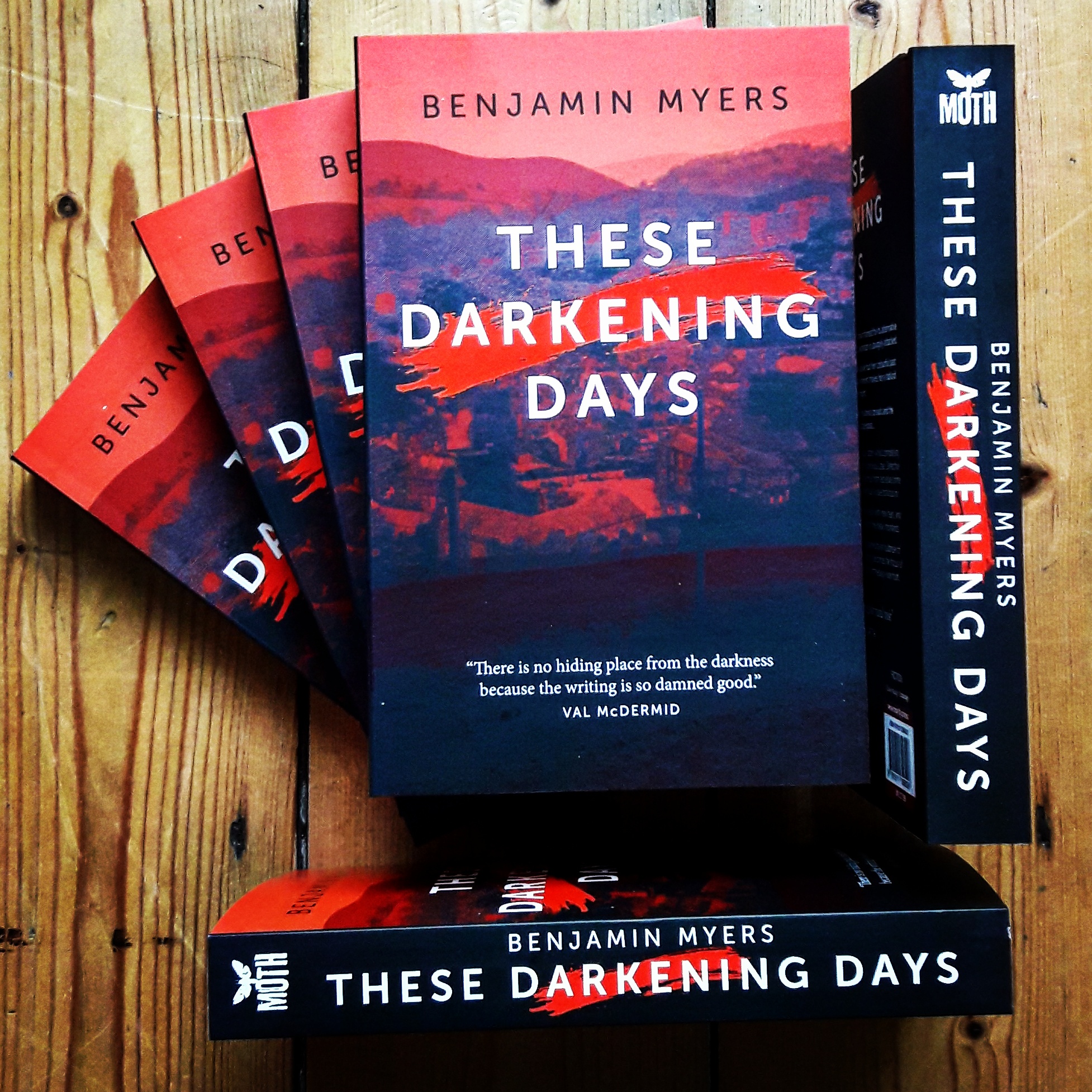BENJAMIN MYERS
THESE DARKENING DAYS
MAYFLY PRESS 2017
Harking back to the glory days of British rock when bands like Led Zeppelin and Black Sabbath could deliver two classic records within the space of a year, These Darkening Days marks the second of two Benjamin Myers novels published in 2017, the first being The Gallows Pole, a kind of fictional Yorkshire campfire tale about the true lives of eighteenth century outlaws. A follow-up of sorts to 2016’s claustrophobic and disturbing Turning Blue, this latest offering heralds the return of jaded newspaper hack Roddy Mace alongside OCD-afflicted detective James Brindle.
Favouring atmosphere over action, Myers borrows and subverts the familiar knife-wielding-maniac-on-the-loose theme and transports it from polluted urban streets to a small Pennine town “known for being a bohemian stronghold of sorts. A post-industrial place that has been taken over by hippies and lesbians and liberals and so-called alternative thinkers.”
Acclaimed for his poetic prose, Myers opens the novel with three terse sentences that read like haiku composed in blood on the wall of a murder scene: “A shape, slumped./Like the outline of a heap of spilled refuse./Detritus dumped.” From there, the reader enters a “long season of fire and fever and darkness and death,” where a butcher’s shop is described with an attention to detail like that of a forensics report and the background city hum of the urban novel is replaced by the noises of animals rutting and killing, or themselves being killed.
Mutilation and death sweeping the town, the residents search for scapegoats or ways to profit from tragedy. Mace and Brindle, meanwhile, conduct their own separate investigations while at the same time striving for human warmth and connection in a world neither of them feel at ease with.
Amidst nationwide coverage of the attacks, Myers shows how today even the most remote locations have become just one more annex of the media landscape. Indeed, Myers’ investigation of the zones where desire generated by 21st- century technology intertwines with ancient myths and legends suggests he has less in common with his fellow crime writers than he does with M. John Harrison, Jeff VanderMeer or Alan Moore, who have all explored the influence of landscape on human behaviour.
Far from the benign, nurturing presence the hippies might hope to find in the valley, Mother Earth reveals herself to be merciless and cannibalistic, human life only a shadow passing over her. As a pub landlord explains ‘valley fever’ to Mace, it’s “not so much a fever but more of a feeling that gets hold of those that live in the bottom of the valley where it’s darkest […] They say it’s like an open grave, this valley. The way it narrows and closes right in on you so that there’s only the hillsides framing a sky that shows little sun in these darkening days […] The coffin-lid sky […] is closing down on you, and there’s nothing you can do but scratch at it like a man buried alive.”
Rather than shine a light into the darkness, Myers pushes you straight into it. You’ll come back bloodied and bruised, if you come back at all.
Words: Christopher Brownsword
